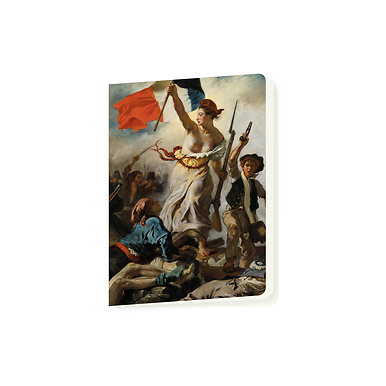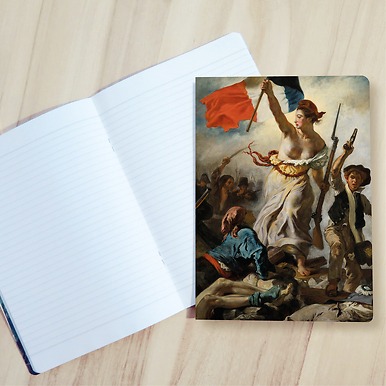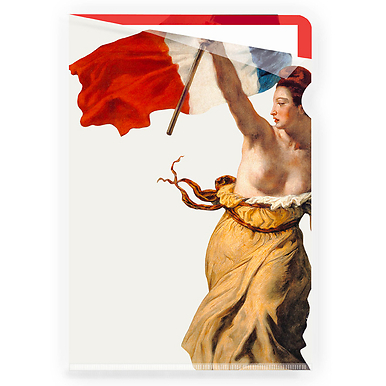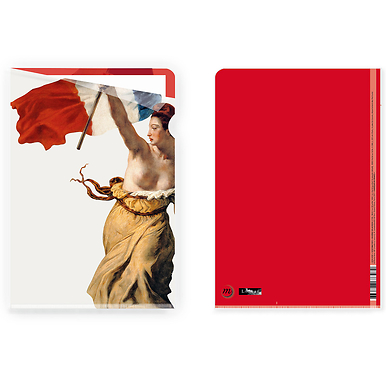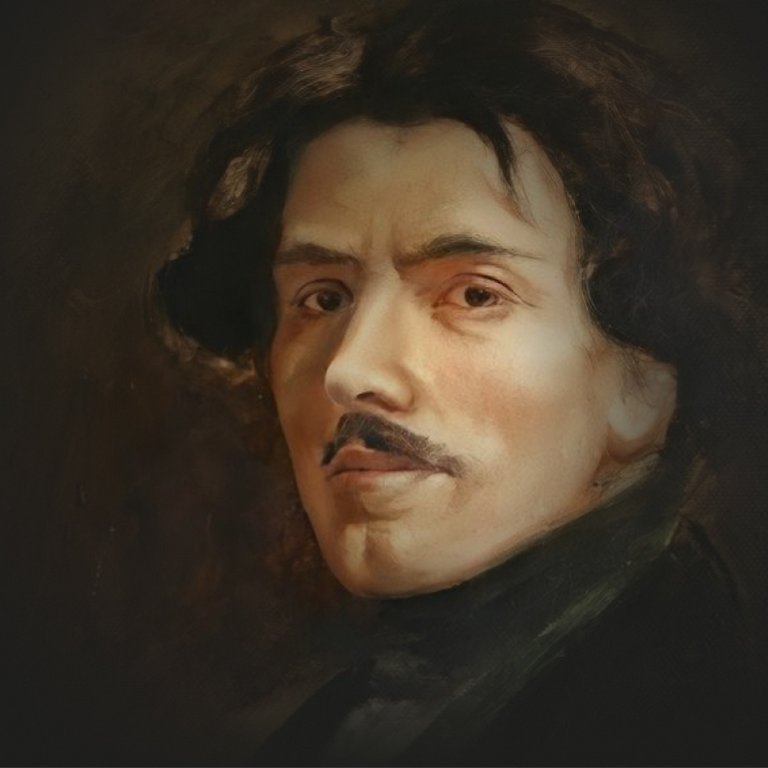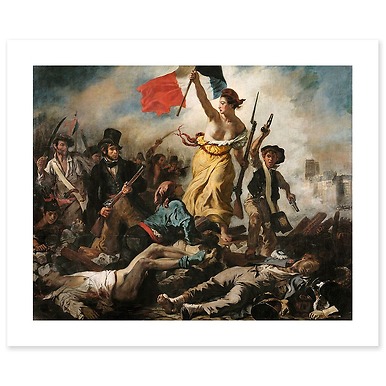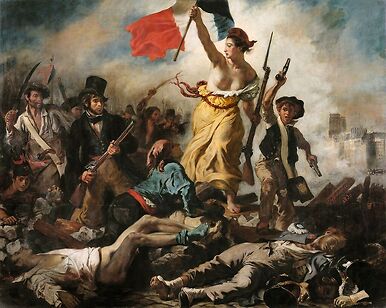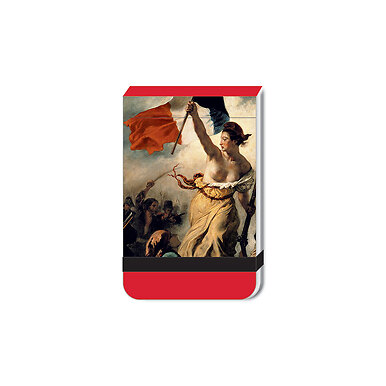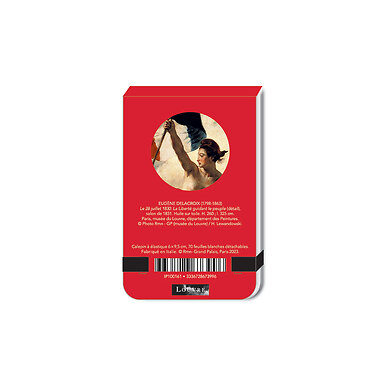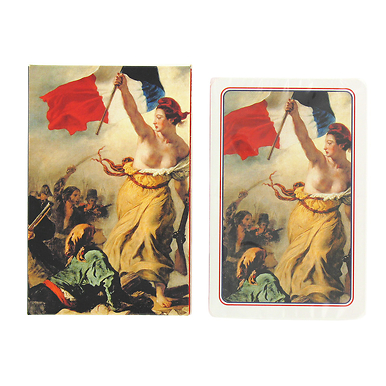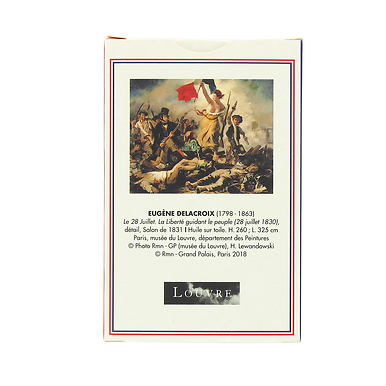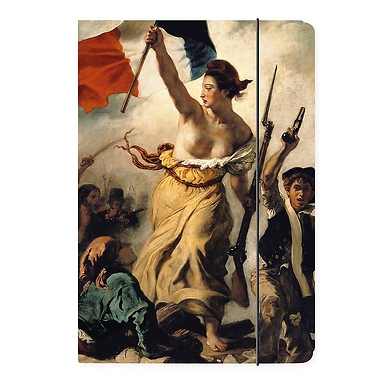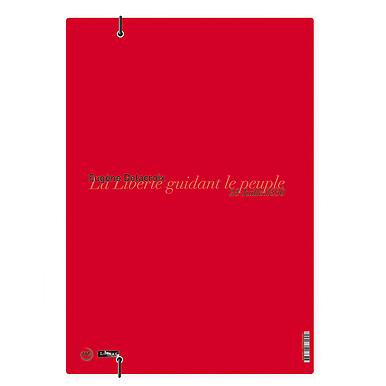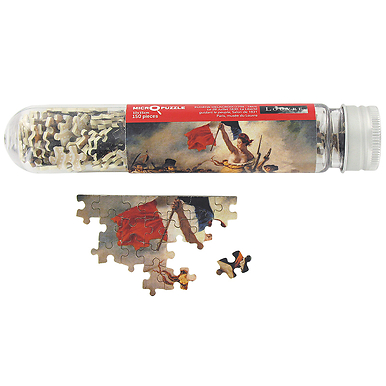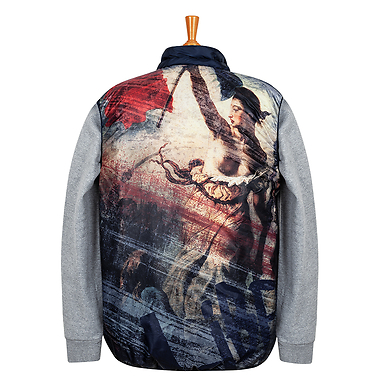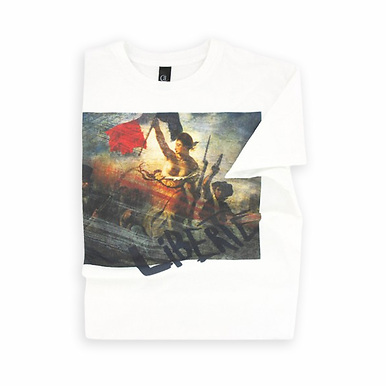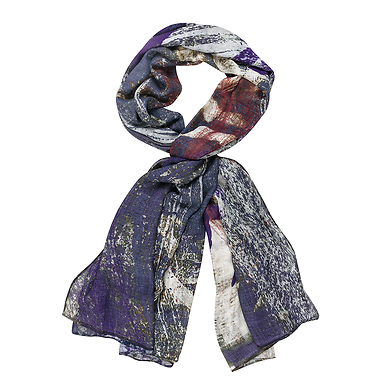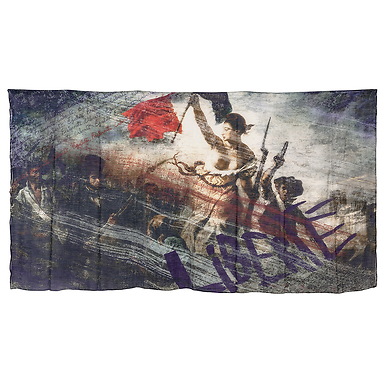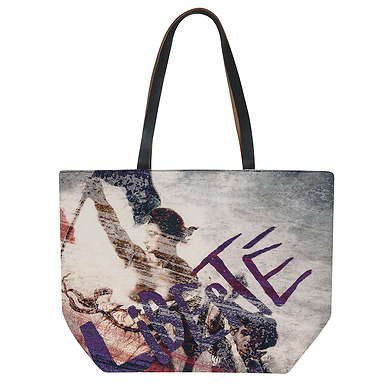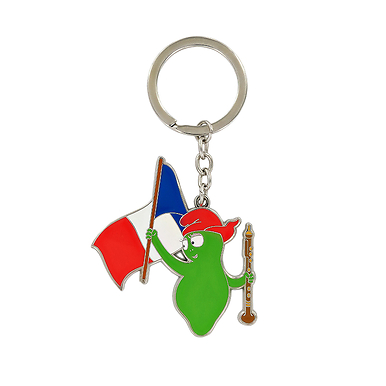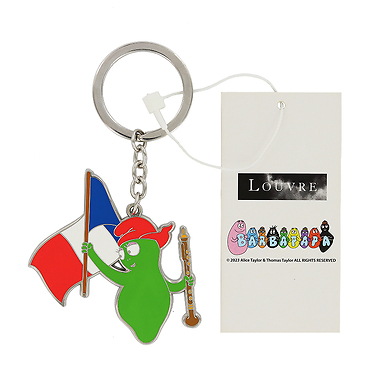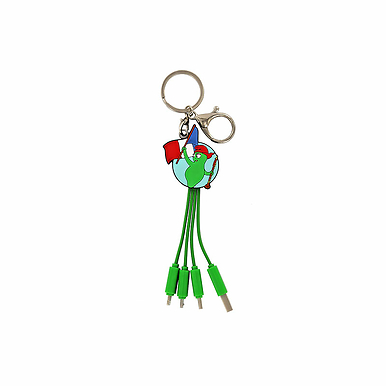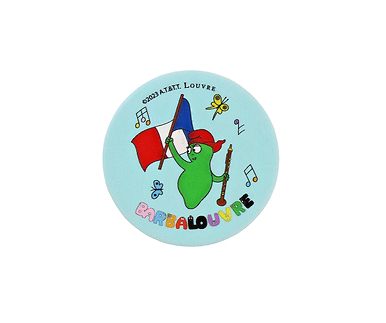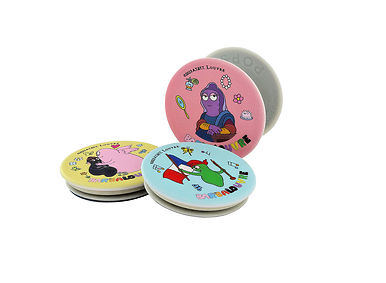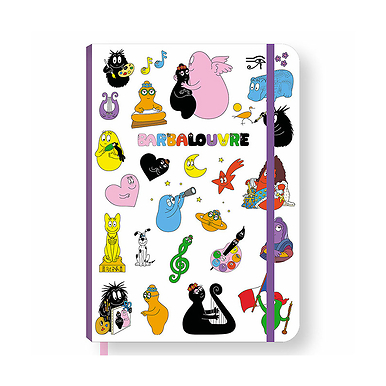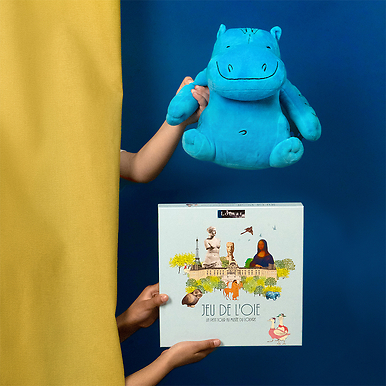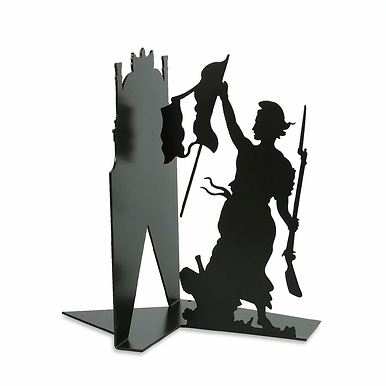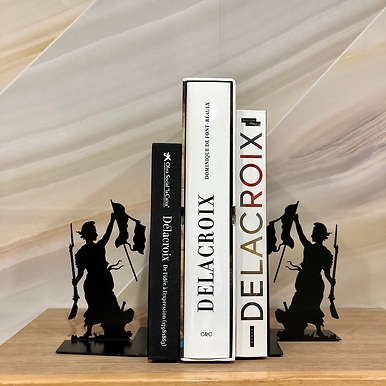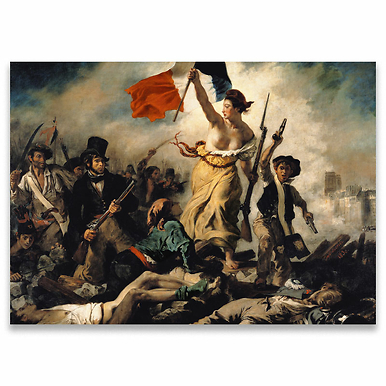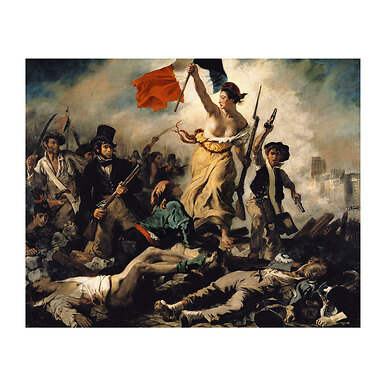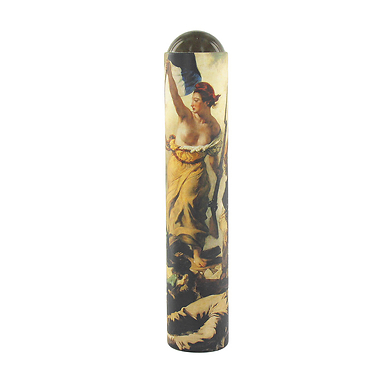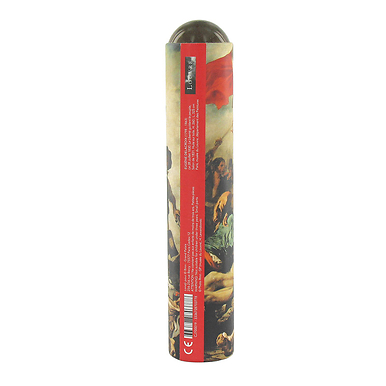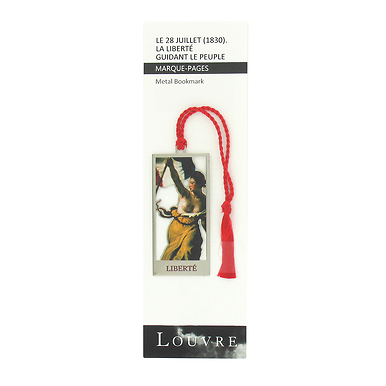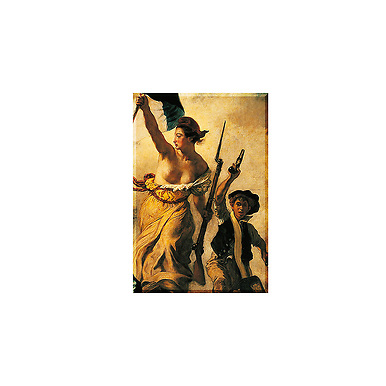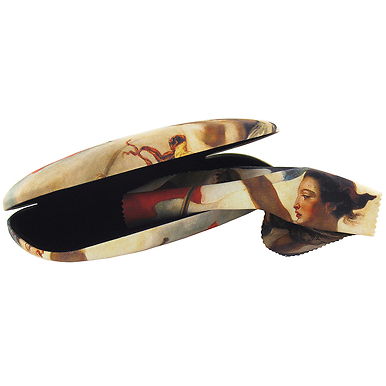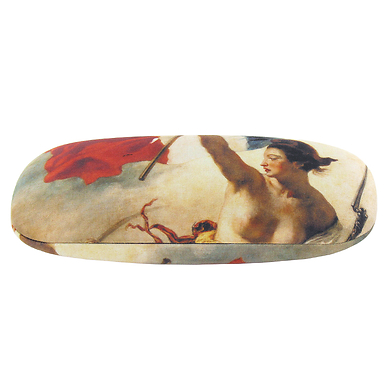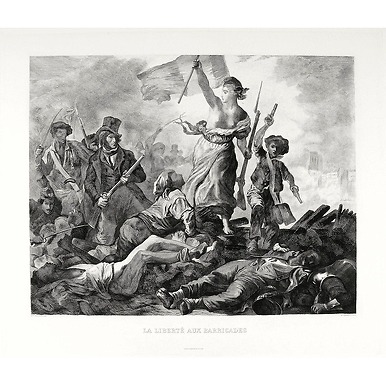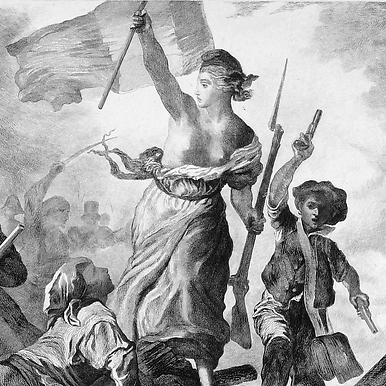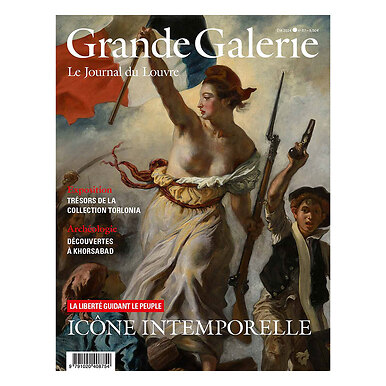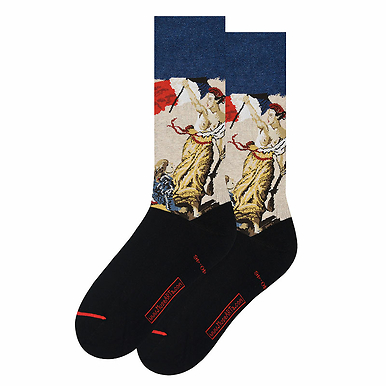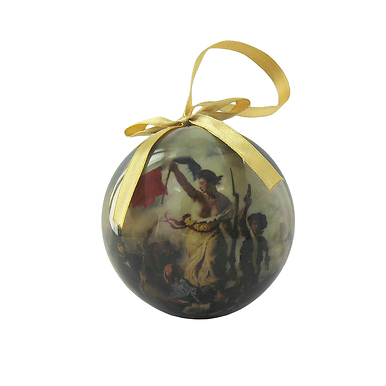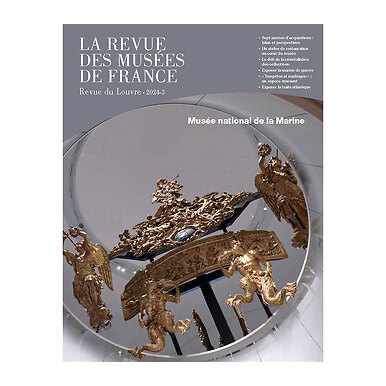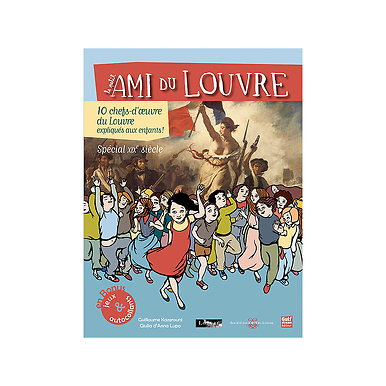Freedom and democracy across the globe
Liberty Leading the People was not painted in reference to the 1789 revolution but to the "July Revolution", the three days in 1830 (27, 28 and 29 July) during which the people rebelled against King Charles X.
With its pyramidal composition, at the top of which sits a fierce daughter of the people dressed in a Phrygian cap, carrying a French rifle and flag, and dressed in yellow clothing reminiscent of robes of antiquity, the painting is in line with other works produced at the same time.
Completed in December 1830, Liberty Leading the People was presented to the public at the Salon de peinture et de sculpture of 1831, and only entered the Louvre in 1874. It has long been one of the museum's most viewed paintings.
While Eugène Delacroix did not seek to produce a symbol of the triumphant republic, over time the painting has become an allegory of the French Republic and of freedom and democracy across the globe, but also a widely distorted and reinterpreted media icon.
Did you know ?
The painting caused a scandal when it came out!
When the French painter presented his canvas to the public at the Paris Salon in 1831, he received a very mixed reception. Decried for its "ugliness" and its raw style in contrast to the classicism of the time, the painting drew widespread reaction and criticism: the uncompromising representation of bodies (armpit hair, dirty skin, etc) was shocking and considered too realistic. It wasn't until much later that he was granted his letters patent. He is now considered the leader of the French Romantic school.

